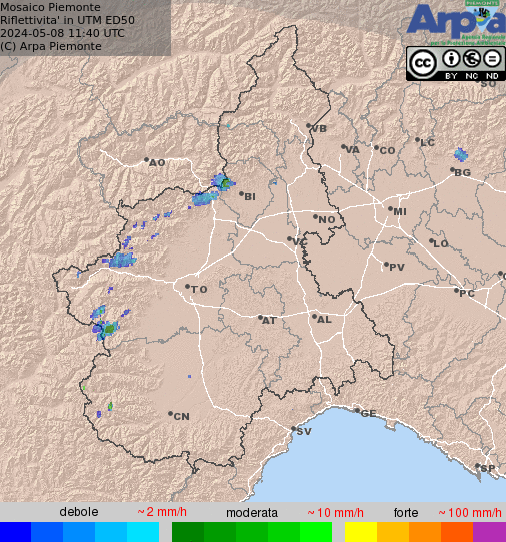Top 7 Tips for Handling Complaints Over Email
Every email that goes out from your customer service team has your company’s brand in the signature line, it puts your corporate reputation on the line, and at the fingertips of a disgruntled customer, your emails can be plastered all over the Internet by way of a powerful blog.
Nearly half of all routine customer service questions emailed are not answered adequately. Companies are addressing only a portion of customers’ questions or the answers they give leave customers thinking a robot must have read the email.
Another big problem with consumer email response is many emails are just plain sloppy. They are filled with mistakes that make companies look unprofessional. Most people don’t review or edit their emails they just hit "send" and when they do, they are putting an entire brand’s credibility on the line.
Email customer service (or E Service) is supposed to give customers quicker answers and solutions while allowing companies to slash operations costs. When email threads go back and forth unnecessarily because questions aren’t answered, operations costs exceed the cost of telephone interactions. And sloppy emails rob companies of credibility.
So you need to carefully craft and proof your emails. How do you do it? Here are 7 basic steps for you.
Read the customer’s email in its entirety
Forty six percent of consumers opening emails from companies are frustrated to discover that their question(s) was not answered. This often happens because employees stop at the first problem described in the email and they, at best, skim the rest of the email. Read the entire email before typing anything.
An excellent way to ensure you respond to every question in the customer’s email is to copy the customer’s email and paste it into your reply back. After pasting the customer’s content into your reply, go paragraph by paragraph through the customer’s email and type your response after each of the customer’s paragraphs. You are, in
cheap oakleys essence, taking the customer’s email and breaking it into little workable chunks and easily addressing every single issue. (After addressing the customer’s questions completely, you, of course, delete the pasted paragraphs.)
Open your email with "Thank you."
A lot of companies begin complaint response emails with: "We have received your email dated" Don’t do this. The fact that you’re responding to the email is irrefutable proof that you have received the customer’s email. Instead of wasting words, immediately go into a response designed to restore the customer’s confidence and regain their goodwill.
My favorite approach to beginning a complaint letter is to begin by expressing appreciation for the feedback. Here are some ways to express appreciation for customer feedback:
"Thank
fake oakleys cheap you for taking the time to write to us."
"Thank you for your email. We appreciate customers who let us know when things aren’t right."
"Thank you so much for taking the time to write to us. We appreciate the opportunity to clarify what we think has happened." (This is ideal for a response email to a customer
cheap replica oakleys who is actually responsible for the error or when you cannot honor the customer’s request for a refund or
fake oakley wholesale exchange.)
Most company replies to emails that describe problems do not include an apology. To not apologize to
cheap oakleys a customer
wholesale cheap oakley sunglasses who has experienced a problem is to miss an opportunity. Making an apology to customers after things go wrong is positively related to satisfaction with the company’s "recovery." When your employees apologize to customers, they convey politeness, courtesy, concern, effort, and empathy.
Let me let you in on a little secret: an apology doesn’t have to be an admission of fault. And it’s not even about placing blame. The whole point is to convey that you genuinely care
cheap oakley sunglasses about how the customer was treated and to regain goodwill. I believe in apologizing to the customer whether the problem they experienced was a result of an act of nature, a third party, or even the customer. It goes without saying that I believe that we must apologize when the problem is the fault of the company.
Explain why or how the problem happened
A vital, but often overlooked element of customer recovery is to provide an explanation for how or why the problem happened. Taking the time to explain to a customer what might have caused the problem helps organizations re establish trust.
In an article titled, Manage Complaints to Enhance Loyalty, John Goodman says, "In many case, a clear, believable explanation as to why the policy or performance is reasonable will at least mollify the customer and, in some case, satisfy him or her."
Providing an explanation can be as simple as saying, "Thanks for taking the time to let us know about _____. We appreciate customers who let us know when things aren’t right."
Customers will always appreciate you taking the time to explain why the problem occurred and again, this gesture on your part helps to reestablish trust.
Offer compensation if applicable
When the problem is clearly the fault of the company, recompense (in the
oakleys sunglasses form of discounts, free merchandise, refunds, gift cards, coupons, and product samples) will help you restore customer confidence and regain goodwill. Our research has found that 58% of complaining consumers who received something in the mail following their contact with the company were delighted, versus only 40% of those who did not receive anything.
Don’t hold back when it comes to compensating customers after a service failure. Your reward will be increased customer satisfaction, loyalty, and powerfully persuasive positive word of mouth advertising.
Grammar gaffes make your company look bad. You and I both know spell check (and even grammar check) won’t catch everything. You are going to have to invest a little time to read and re read every line of your emails to make sure they look and read professional. Here are some hard and fast email proofing tips:
Point with your finger and read one word at a time. Yes, this will take some time, but you’ll be amazed at how many mistakes you capture this way.
Read your email aloud and silently.
Proof for only one type of mistake at a time. Do one read through just for punctuation, another for word usage, and another for accuracy of your message.Articles Connexes:
- http://thestewartgroup.ca/wholesale-oakleys-oakleys-sunglasses-8104/
- http://www.britmovie.co.uk/
- http://www.skinnymom.com/
- http://participasevilla.sevilla.org/?p=11712
- http://www.fundacionsasm.org/cheap-oakleys-fake-oakley-sunglasses-9541/
- http://www.hernaldozuniga.com/cheap-oakleys-fake-oakley-wholesale-9543/
- http://www.edgepublicsolutions.co.uk/fake-cheap-oakleys-wholesale-oakleys-6293/
- http://www.stephenfry.com/
Articles Connexes:
- http://www.apstuffworld.com/
- http://mercy-ministries-international.org/
- http://www.penzion-kara.eu/?p=75
- http://wotlabs.net/articles/fake-oakley-wholesale-fake-cheap-oakley-sunglasses-6678/
- http://www.chathamfinancial.com/about/cheap-oakleys-fake-oakley-sunglasses-cheap-4560/
- http://www.phillbutterfield.com.au/?p=248
- http://www.vanix.net/
- http://www.khyamallami.com/site/cheap-wholesale-oakleys-wholesale-cheap-oakley-sunglasses-1639/
- http://www.hot108.com/blog/2015/cheap-oakleys-fake-cheap-oakleys-1291/
- http://www.enex.lu/public/cheap-fake-oakley-sunglasses-9908/
Meteo: Pioggia e frane in Vietnam: 17 morti
giugno 27, 2018
Incidente alla centrale nucleare di Krško, in Slovenia??
febbraio 19, 2017
La Neve conquista Yellowstone: che meraviglia!
settembre 16, 2016
Allarme in Florida
settembre 01, 2016
Arriva Gastone… il primo grande uragano della stagione
agosto 31, 2016
Inondazioni in India, decine di vittime
agosto 22, 2016











































